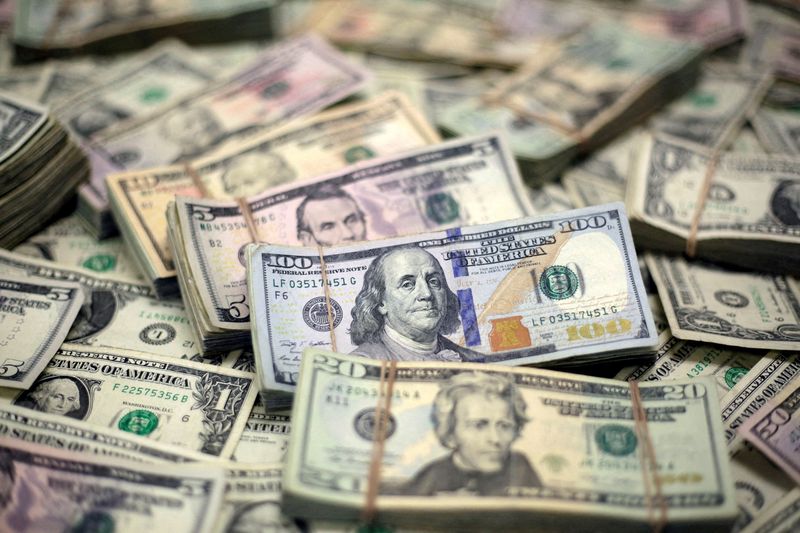By Sarupya Ganguly
BENGALURU (Reuters) – The U.S. dollar will hold steady in coming months despite an expected series of Federal Reserve interest rate cuts, according to median forecasts from FX strategists polled by Reuters who were, however, largely split on the currency’s broad direction.
Since July the greenback has lost almost all the near-5% gains against a basket of major currencies accumulated through mid-year on expectations the Fed would reduce its funds rate from what many considered an overly-restrictive level. However, the currency has been mostly stable in recent weeks.
With price pressures now broadly thought to have been tamed, the central bank started easing last month with an oversized half-percentage-point cut to forestall any further weakening in the job market in the world’s largest economy.
The Fed was expected to cut its key policy rate by 25 bps in both November and December, according to a majority of over 100 economists in a separate snap Reuters survey taken after the September meeting.
While in line with the Fed’s own projections and chair Jerome Powell saying policymakers were not “in a hurry” to cut rates, that expectation was shallower than the near-72 bps of easing interest rate futures are currently pricing.
Despite this, the dollar would remain resolute in coming months with the euro, currently around $1.11, seen holding that level by year-end and through end-March, according to median forecasts of nearly 80 strategists in a Sept. 30-Oct. 2 Reuters poll.
The common currency was then expected to strengthen about 2% to $1.13 in a year, the survey showed, consistent with calls for dollar weakness analysts have held for the majority of this year.
“While it has been our view a global soft landing combined with Fed easing should, if realized, eventually result in broad dollar weakness, the path to get to that destination at least in the near-term could be treacherous,” noted Meera Chandan, FX strategist at JP Morgan.
Analysts who answered a separate question were split on the dollar’s broad direction over the remainder of the year with slightly over half, 35 of 62, saying it was more likely to trade weaker than they predict. The rest said stronger.
“The Fed seems to be very much in risk-management mode and wanting to achieve a soft landing and though employment data is slowing it’s not falling off a cliff either,” said Alex Cohen, FX strategist at Bank of America.
“What markets have generally been pricing – a 50 bps cut in November followed by 25 bps in December – we are forecasting that as well. Barring any major upside surprise in labor market data, that’s the path they’ll be on – and that coincides with a softer dollar.”
Respondents on the other end of the spectrum highlighted safe-haven demand from increasing risks of widening conflict in the Middle East as being one of a few possible tailwinds for the dollar in coming weeks.
The outcome of the November U.S. presidential election and financial markets now fully pricing an October European Central Bank rate cut were also mostly viewed as potential dollar-positive events, the poll found.
“The dollar can probably strengthen further, more so into the U.S. election as we don’t think the market is fully pricing any premium for potential Trump tariffs,” said Dan Tobon, head of G10 FX strategy at Citi.
“We also think there’s more room for markets to price in a more dovish ECB, though that’s more of a bearish euro view than a view of broad dollar strength.”

The Japanese yen, up over 11% since July, was projected to be the top-performer among major currencies, rising over 6% to about 136/$ in a year.
(Other stories from the October Reuters foreign exchange poll)
